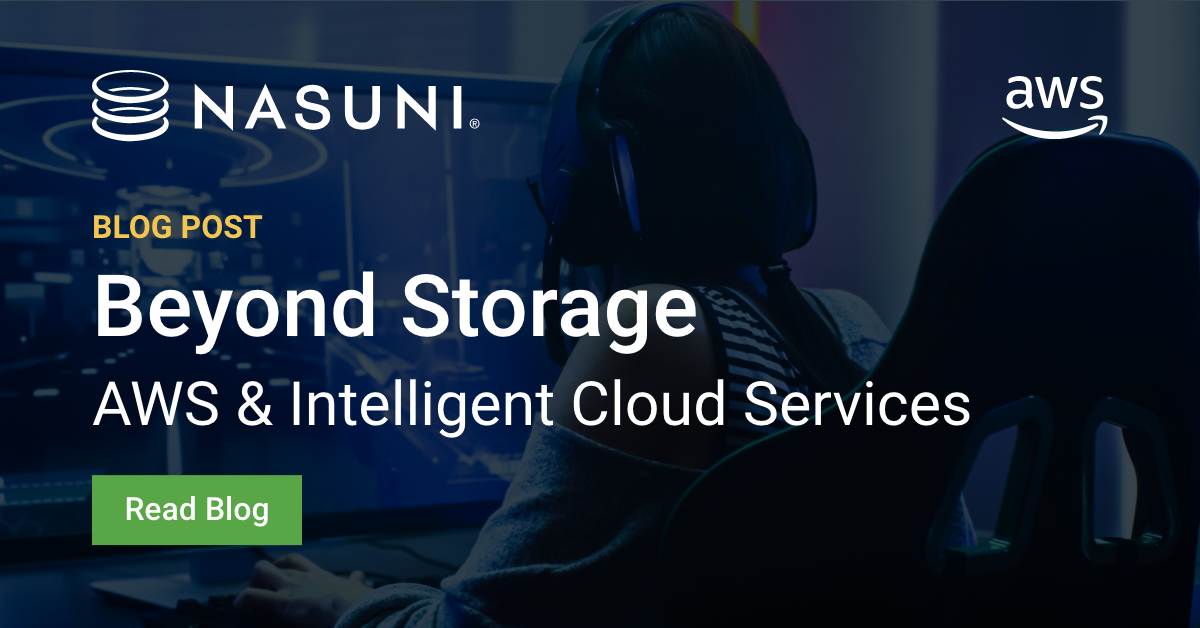Beyond Storage: AWS & Intelligent Cloud Services
Moving your file data to the cloud isn’t just about leveraging scale anymore. That remains a major part of the story, of course, but AWS is also ushering in a new era of cloud services.
March 22, 2022

Design files are moving to the cloud in droves. The Architecture, Engineering, and Construction (AEC) industry was one of the first verticals to start making the switch to cloud file storage and cloud file services. But now just about any large organization that manages design and building files is accelerating its transition to cloud infrastructure – if it isn’t fully converted to cloud already. And why not? Ever-expanding CAD and BIM models push traditional storage hardware to capacity, forcing unforeseen capital expenditures, yet the cloud offers unlimited scale, fast access, and unprecedented file sharing and collaboration capabilities.
Yet moving these files to the cloud opens up an entirely new suite of cloud services that organizations are just beginning to tap. Amazon’s cloud services like Kendra, Rekognition, and Macie are empowering organizations with exciting new capabilities to extract significant incremental value out of files that otherwise sit dormant. I’m particularly keen on how they apply to state, municipal, and local governments and departments, and would like to share a few of the applications here.
1. Search with Amazon Kendra
As our CTO wrote recently, the SaaSification of apps has walled off some file types. Sure, you can do exciting work with BIM360 in your Autodesk Construction Cloud, but you can’t search Adobe files at the same time – not if they reside in Adobe’s vendor-controlled cloud.
When all your file data scales in Nasuni and Amazon S3, on the other hand, you can search 3D models, old blueprints scanned as PDFs, documents, and more. Powered by machine learning, Amazon Kendra allows you to find what you’re looking for no matter where it resides within your organization.
A municipal building department can search for structures erected in a certain timeframe, with a certain number of stories, to determine which ones might be due for inspection. Or, in the case of an unexpected disaster or flaw at one site, you could search for sites and buildings with similar characteristics to identify structures that need to be upgraded before a similar problem strikes.
2. Scan with Amazon Rekognition
Once your video data resides in the cloud with Nasuni and AWS, it’s not just locked away in some inaccessible mountain vault. Archives have changed. Today, video file data can be stored cost-effectively in different AWS tiers and scanned for critical information with the Amazon Rekognition service, which can analyze millions of images and videos in minutes. The potential applications are almost limitless.
3. Protect PII with Macie
Everyone’s scared of their personally identifiable information (PII) getting out there, and Amazon Macie is designed to help organizations protect personal and sensitive data at scale. This tool scans your file data for social security numbers, credit card information, and other PII to make sure this data isn’t exposed, and sitting out there waiting for malicious actors to grab it.
Nasuni Labs & What’s Next
AWS is doing some amazing stuff with their AI- and ML-enhanced cloud services. These three I mention here are really just the tip of the innovation iceberg.
Moving your file data to the cloud isn’t just about leveraging scale anymore. That remains a major part of the story, of course, but AWS is also ushering in a new era of cloud services. Here at Nasuni, we’re doing some exciting work of our own with innovations like Nasuni Labs. I’m excited about what Nasuni and AWS can do for organizations today, and I’m thrilled about what’s to come.